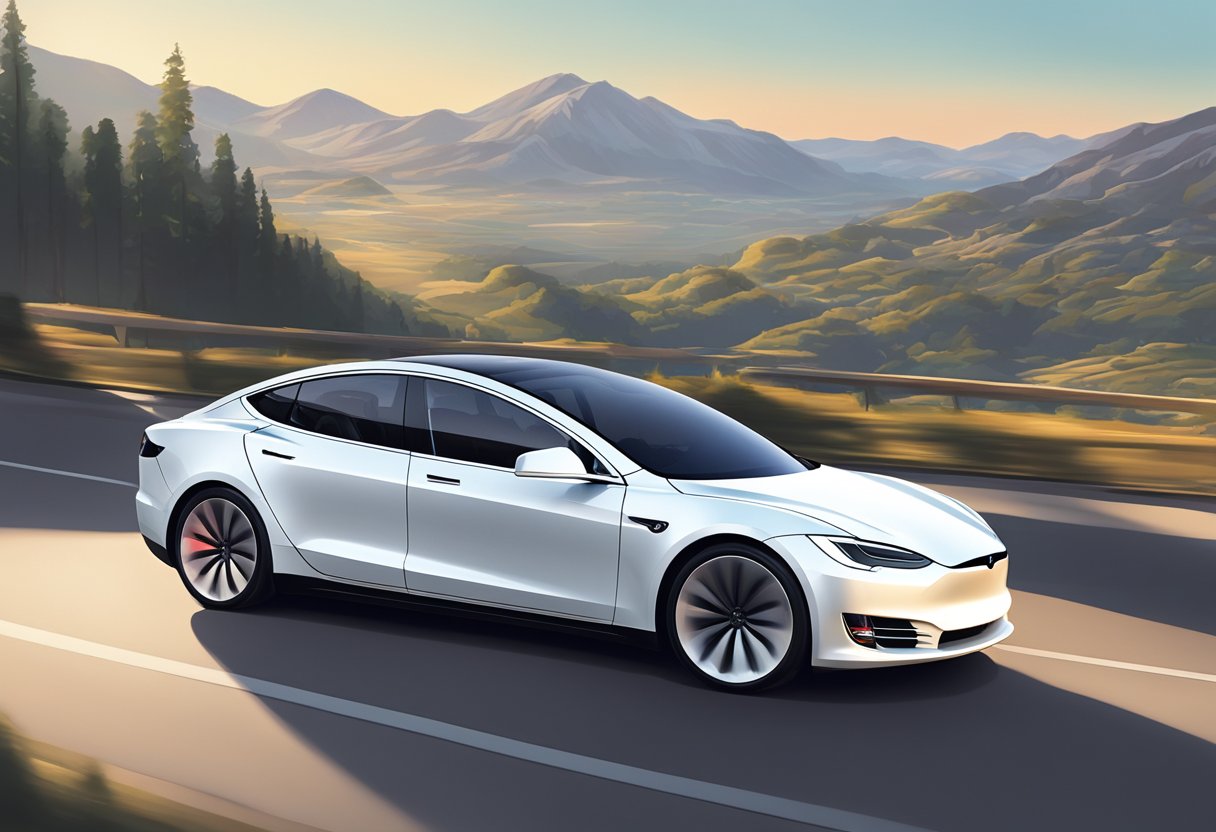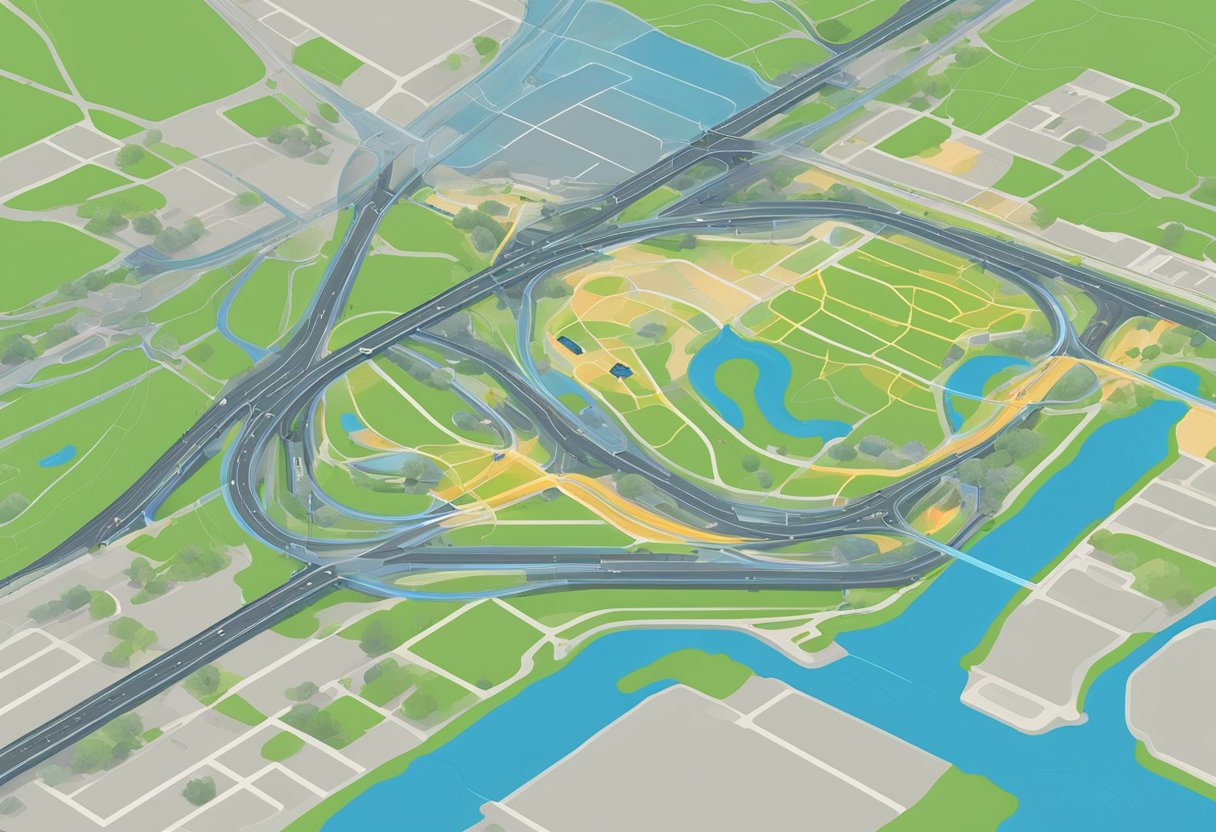Tesla is known for its advanced features and updates, and its navigation system is no exception.
One question that many Tesla owners have is what maps does Tesla use? While some assume that Tesla uses Google Maps, the answer is a bit more complex than that.

Understanding Tesla’s Navigation System is key to understanding what maps Tesla uses. Tesla’s navigation system is built into the car’s touchscreen display, which shows a map at all times.
Users can interact with the map using touch gestures, such as holding and dragging a finger to move the map or expanding and pinching two fingers to zoom in and out.
The system is designed to provide drivers with real-time traffic updates and routing information to help them get to their destination as quickly and efficiently as possible.
Integration and Compatibility are also important factors to consider when it comes to what maps Tesla uses. While Tesla does not use Google Maps for points of interest or locating destinations, it does use Google Maps for basic pinpoints on the navigation screen.
In addition, Tesla has partnered with Mapbox for open-source mapping and custom-designed maps, which allows for greater integration and compatibility with the car’s software and hardware.
As a result, Tesla’s navigation system is able to provide drivers with a seamless and intuitive experience that is tailored to their specific needs.
Key Takeaways
- Tesla’s navigation system is built into the car’s touchscreen display and provides real-time traffic updates and routing information.
- Tesla uses Google Maps for basic pinpoints on the navigation screen but does not use it for points of interest or locating destinations.
- Tesla has partnered with Mapbox for open-source mapping and custom-designed maps, which allows for greater integration and compatibility with the car’s software and hardware.
Tesla’s navigation system is an essential part of the driving experience for Tesla owners. It allows drivers to easily navigate to their destinations while providing real-time traffic updates and alternative routes.
The navigation system is built into the car’s infotainment system and is designed to be user-friendly.
The Tesla navigation system is based on GPS technology, which allows it to accurately track the car’s location and provide directions to the driver.
The system uses a combination of satellite data and mapping software to provide real-time information about traffic conditions, road closures, and other important information.
One of the key features of Tesla’s navigation system is its integration with Google Maps. Tesla vehicles leverage Google Maps as the foundation for their navigation system, which allows users to access a familiar and widely trusted mapping interface.
However, it is important to note that Tesla does not use Google Maps for points of interest or to locate the destinations that users punch in. Instead, Tesla uses a different software called Mapbox for open source mapping and custom-designed maps.
Another important aspect of Tesla’s navigation system is its ability to learn from the driver’s behavior. The system can analyze the driver’s habits and preferences, such as preferred routes and destinations, and use that information to provide more personalized and efficient navigation.
This feature is particularly useful for drivers who frequently travel the same routes or have specific preferences for their driving experience.
In addition to the standard navigation features, Tesla’s navigation system also includes a number of advanced features. For example, the system can provide real-time information about nearby charging stations for electric vehicles, allowing drivers to plan their trips more effectively.
The system can also provide alerts for potential hazards on the road, such as accidents or road closures.
Overall, Tesla’s navigation system is a powerful tool that enhances the driving experience for Tesla owners. With its advanced features and user-friendly interface, it is easy to see why the system is so popular among Tesla drivers.
Integration and Compatibility

Tesla’s navigation system is unique and does not use Google Maps or any other third-party mapping software. Instead, Tesla has its own navigation system, which is designed to work seamlessly with the car’s hardware and software.
While Tesla does not support Android Auto or Apple CarPlay, it does have its own mobile app that allows owners to remotely control their cars, view charging status, and more. The Tesla app is available for both iOS and Android devices and can be downloaded from the App Store or Google Play Store.
The Tesla app can also be used to plan trips and send directions to the car’s navigation system. This feature is especially useful for drivers who want to plan their route ahead of time and avoid traffic or other delays.
In addition to the Tesla app, the car’s navigation system can also be controlled using voice commands or the touchscreen display. The navigation system is designed to be intuitive and easy to use, with clear and concise directions that are displayed on the car’s dashboard.
When it comes to connectivity, Tesla supports Bluetooth for hands-free calling and audio streaming. This means that drivers can connect their smartphones to the car’s audio system and listen to music or make phone calls without having to take their hands off the wheel.
Overall, Tesla’s navigation system is highly integrated and designed to work seamlessly with the car’s hardware and software. While it may not support third-party mapping software or Android Auto/Apple CarPlay, it does offer a range of features and capabilities that are unique to Tesla.
Tesla’s navigation system offers several advanced features and updates that enhance the driving experience. These features include Autopilot, consumption tracking, speed limits, Superchargers, weather, and INRIX traffic data.
Autopilot is Tesla’s advanced driver assistance system that uses cameras, sensors, and radar to assist the driver with steering, braking, and acceleration. The system can also navigate on the highway, change lanes, and park the car.
Consumption tracking is a feature that allows drivers to monitor their energy usage and efficiency. It shows the amount of energy used per mile or kilometer, as well as the estimated range based on current driving habits.
Speed limits are displayed on the navigation screen, and the system can adjust the speed of the car accordingly. This feature helps drivers avoid speeding tickets and promotes safer driving.
Superchargers are Tesla’s proprietary charging stations that can charge the car’s battery quickly. The navigation system shows the location of nearby Superchargers and calculates the optimal route to reach them.
Weather information is displayed on the navigation screen, including current conditions, temperature, and precipitation. This feature helps drivers plan their route and prepare for any weather-related challenges.
INRIX traffic data is a feature that provides real-time traffic information, including congestion, accidents, and road closures. The system can adjust the route to avoid traffic and save time.
Overall, Tesla’s navigation system offers several advanced features and updates that make driving safer, more efficient, and more enjoyable.
Tesla’s navigation system is based on several third-party services, including Google Maps and Mapbox, from which it gathers the data it requires to function as accurately as possible.
While Tesla uses Google Maps for basic pinpoints on the navigation screen, it does not use it for points of interest or to locate the destinations that drivers enter. Instead, the automaker has created its own routing engine and maps, which are based on data collected from its fleet of vehicles.
Compared to other navigation systems such as Waze, Tesla’s system is known for its accuracy and reliability. According to a comparative analysis by EVS, Tesla’s navigation system is more precise than Waze, which sometimes provides incorrect directions.
Additionally, Tesla’s system is more efficient at routing drivers around traffic, which is a major benefit to drivers who want to avoid congestion and save time on their commutes.
One of the key advantages of Tesla’s navigation system is that it is integrated with the car’s battery management system. This means that it can provide drivers with real-time information about the amount of energy that is required to reach their destination, as well as the location of nearby charging stations.
This is particularly useful for drivers who are planning long-distance trips and want to make sure that they have enough charge to reach their destination.
Another advantage of Tesla’s navigation system is that it is integrated with A Better Route Planner (ABRP), which is a third-party app that provides drivers with detailed information about charging stations and the most efficient routes to take.
By using ABRP, drivers can optimize their routes to minimize charging time and improve their overall driving experience.
In terms of fees, Tesla’s navigation system does not charge any additional fees for its services, which is a major advantage for drivers who want to avoid paying extra for navigation features.
By contrast, some other navigation systems charge fees for premium features such as real-time traffic updates or voice-guided navigation.
Conclusion
Overall, Tesla’s navigation system is a reliable and efficient option for drivers who want accurate directions and efficient routing.
By integrating with ABRP and the car’s battery management system, Tesla’s system provides drivers with a comprehensive set of tools to help them plan their trips and optimize their driving experience.
- Tesla Charger Installation Cost (Home Setups) - March 1, 2024
- Tesla Phone Key Disconnected (Troubleshooting Guide and Quick Fixes) - March 1, 2024
- Tesla FSD 12 (Explained) - March 1, 2024